#natural titanium dioxide
Explore tagged Tumblr posts
Text
Exploring the Role of Titanium Dioxide in Food Safety and Preservation
Titanium dioxide (TiO₂) is a naturally occurring mineral widely used in various industries for its remarkable colorant properties. In the food industry, it is known for its ability to enhance the appearance of food products while contributing to their preservation. This article delves into the role of titanium dioxide in food safety and preservation.
Enhancing Food Appearance
Visual Appeal: Titanium dioxide is highly valued for its ability to impart a bright white color to food products. This is particularly important for products like icings, dairy products, and confectionery, where visual appeal significantly influences consumer choices.
Consistency: The uniformity in color provided by titanium dioxide ensures that food products maintain a consistent appearance, which is crucial for brand identity and consumer trust.
Preservation Properties
UV Protection: One of the key benefits of titanium dioxide is its ability to absorb ultraviolet (UV) light. This property helps protect food products from UV-induced degradation, extending their shelf life.
Heat Stability: Titanium dioxide remains stable under high temperatures, making it suitable for use in products that undergo thermal processing. This stability ensures that the color and quality of the food are maintained throughout the production process.
Light Stability: In addition to heat stability, titanium dioxide offers excellent resistance to light exposure. This is particularly beneficial for products displayed in well-lit retail environments.
Safety and Regulatory Approval
Regulatory Endorsements: Titanium dioxide is approved for use as a food additive by various regulatory bodies, including the European Food Safety Authority (EFSA) and the U.S. Food and Drug Administration (FDA). These endorsements are based on extensive research demonstrating its safety.
No Adverse Health Effects: Despite some concerns, comprehensive studies have found no verifiable link between titanium dioxide consumption and adverse health effects. Its use in food products is considered safe within regulated limits.
Titanium dioxide's role in enhancing the appearance and preservation of food products is well-established. Its unique properties, coupled with regulatory endorsements, make it a reliable and safe additive in the food industry.
For more information visit us:
0 notes
Text
Choose Environmentally Friendly Sunscreens: Protecting Marine Life
Sunscreen plays a vital role in protecting our skin from the harmful effects of the sun, especially during the summer months. However, it’s important to be aware of the impact that certain sunscreen ingredients can have on marine life, particularly coral reefs. In this article, we will explore the key concerns associated with sunscreen use and highlight alternative options that are both effective…

View On WordPress
#carotenoid family#chemical sunscreen#coral reefs#eco-friendly#environmentally friendly#marine life#nano-scale particles#natural alternatives#octinoxate#oxybenzone#oxybenzone breakdown technologies#physical sunscreen#preserving marine ecosystems#skin protection#summer#Sunscreen#sunscreen ingredients#titanium dioxide#ultra-hygrophilic bacteria#UV rays#zinc oxide
1 note
·
View note
Text
On Friday, the Georgia EPD granted permits to Twin Pines to strip-mine three miles from Okefenokee Swamp. This will be a "demonstration mine" of 600 acres digging out titanium dioxide, staurolite, and zircon. I cannot state how disappointed I am in my own state's environmental department to approve something so damaging to our natural wetland. The Okefenokee is the largest blackwater swamp in North America and one of the most endangered rivers in America. Hopefully, John Ossoff will block it again as he did back in 2022.
If you are looking for ways to help go ahead and check out 100miles.org and Georgia River Network.
#environmentalism#okefenokee swamp#save the swamp#protect our wetlands#swamp conservation#swampcore#save our wetlands#strip mining
1K notes
·
View notes
Text
In a significant breakthrough for the cosmetics industry, researchers have developed a new type of sunscreen using lignin, a naturally abundant polymer, and titanium dioxide (TiO2). The study, led by Yarong Li and Zhiguang Tang, was published in the Journal of Bioresources and Bioproducts and details the innovative use of a dual-modified lignin sub-microsphere to enhance the SPF and improve the color of sunscreens. Lignin, a byproduct of the pulp industry, is known for its UV-absorbing properties and antioxidant capabilities. However, its application in commercial sunscreens has been limited due to its low SPF and dark coloration.
Continue Reading.
96 notes
·
View notes
Text
Batman beyond’s suit isn’t a full nanotech suit, it’s definitely not armoury but bulletproof material
the suit is made of multiple layers which can be seen in the episode where Terry crash bc of the spellbinder

the suit is FUCKING MADE OF FABRICS
now what fabric is bulletproof if the suit is made like what, our time? 20 years old suit, and the year Terry become batman was the year 2039? so 2019 was when Bruce finished built it.
And what is bulletproof of our time?

this fucking materials, which is Kevlar, Steel, Polyethylene (PE) or Ceramic. Definitely not Ceramic.
the reason i think it’s bulletproof bc i think 2019 still use bullets instead of LAZERS (obviously) But it do stands against the lazers…ish
I wouldn’t say it’s completely bulletproof like how Superman’s skin or Wonder Woman’s skin works. But it protects Terry some certain attack. Like it still conflicts pain but no hole
And I don’t know if Bruce even use any other alien material or the DC universe original materials (if they even had one)
I also think it has to be a mix of Kevlar and Polyethylene. It can’t protect Terry from electric attack but still keep him some safety.
And because it’s layered, now pause, I wonder why the fuck can’t it change it’s size when Terry changed into a bat. But whatever 😭
It got torn bc of sudden size change…
Polyurethane is probably also used since it can be used in plastic car parts
or this bunch of fucking shit to stands heat like electricity, fire, and some shit. Also it’s waterproof? and against radiation (WHAT CAN GO AGAINST RADIOACTIVE STUFF, ANSWER IS LEAD, CONCRETE AND WATER, so the suit gotta have lead in it)


im literally so tired, im freaking goin’ off the line rn
Kevlar and Polyethylene is definitely being used.
So one layer is Polyethylene, then kevlar with those mechanical elements or something, then a mix between them with some other elements.
the mask is well, weird.
it has an HUD

with multifunction systems
I gotta say that the full suit has to make Terry’s build look a bit bigger with those mechanics bro
but here’s some of my guessing of the mask

the mouth is still mysterious for me so i got no clue 😭
How do the nature of the suit give the person wear them increase strength, stamina, endurance, agility and etc. Yeah it was explained on the wiki by exoskeleton circuits and servomotors made by Peter Corso. No Peter Corso didn’t know the servomotors is being used for making the suit, I think.
and the cloaking, turning invisible is probably inspired by light refractive polymer which is linked to the wiki. but it’s debatable since we still hasn’t got to that part yet, but the polymer of the suit has to be somewhere 1.3-1.7 (if Bruce use something to make the materials to be light refractive polymer) for the common refractive materials.
why the fuck am i even reading those shit, I DONT UNDERSTAND ANYTHING.

ZnO, ZnO2 - Zinc Oxide
TiO2 - Titanium Dioxide
But it’s probably got build in to the suit later since 2024 and we still hasn’t got any other materials that can make us invisible
unless we are talking about this

Invisible Cloak from 2023, introduced by Chu Junhao under the event Super Night of Science
I got no clue if it’s true or nah, couldn’t find the og source either
but perhaps the servomotors can change the materials’ reflection by manipulating the light making Terry invisible.
But if it’s nanotech then i got no answer
literally
like we got no nanotech irl so what do i even say 😭
Anyways that’s some of my thinking, im not an engineering expert or anything so i can say shit completely incomprehensible.
and no i dont know how the wings works
like they sometimes stick to Terry’s arms, sometimes it just an independent wings
so
no clue.
but it’s a fly-able wing
then it will be similar build to how wingsuit flying sport works expect only the wing part, or maybe hang gliding 🤷


anyways thats the end of this bs post
i got nothing
spare me from your questions
23 notes
·
View notes
Text

Lignin-based sunscreen offers natural and high-performance UV protection
In a significant breakthrough for the cosmetics industry, researchers have developed a new type of sunscreen using lignin, a naturally abundant polymer, and titanium dioxide (TiO2). The study, led by Yarong Li and Zhiguang Tang, was published in the Journal of Bioresources and Bioproducts and details the innovative use of a dual-modified lignin sub-microsphere to enhance the SPF and improve the color of sunscreens. Lignin, a byproduct of the pulp industry, is known for its UV-absorbing properties and antioxidant capabilities. However, its application in commercial sunscreens has been limited due to its low SPF and dark coloration. To address these challenges, the researchers conducted a dual modification of lignin's chemical structure and physical form. They grafted methylene bis-benzotriazolyl tetramethylbutylphenol (MBBT) onto alkali lignin (AL) to create a polymer, AL-g-MBBT. This polymer was then transformed into sub-micron spheres with and without TiO2 loading.
Read more.
11 notes
·
View notes
Link
3 notes
·
View notes
Text
MORE SCOUT HEADCANONS???? THIS MUTHAFUCKER OUT OF CONTROL!!!!
YALL THOUGHT I WAS DONE⁉️⁉️⁉️BACK WITH IT AGAIN YALL KNOW THE DRILL 🗣️🗣️
He tries to swim in the air if he's held by the waist
He died on December 4th 1987 because he finally listened to something other than Tom Jones for the first time in seven years and melted into a hot radioactive waste full of uranium, radium, graphite, zirconium, titanium magnesium and silicone dioxide. The song was "Walk Like an Egyptian" by The Bangles.
The only facial hair he ever had has a fu manchu
He has ridiculously big earlobes that he gauges when he's 30
He and spy once tricked a bunch of oysters on a beach to come back home with them but spy are them all before scout could even get the seasonings.
SIKE BITCH!!! THESE ARE TOKI HEADCANONS 🗣️🗣️🗣️
Toki Wartooth 🔛🔝❗❗❗
He also has giant earlobes, but every cat he's ever has sucks on them so he can't gauge them
He'd like to be under the sea in an octopus' garden, in the shade.
He hates everything to do with whipping. Or caning. If he hears a belt snap he starts chewing on his hand until it bleeds.
He was hyperdontia, and his canines are spiked because they're chipped!
He can sew very well, and has a pimp hat with Garfield embroidered on it.
The first American song he ever heard in America was "nasty bxtch" by bustdown.
He claims that the Norse god Loki appears in his room on occasion and leaves him peppers and sweets. This actually DOES happen. but every single time, Toki has been microdosing datura so even he has no idea if it's true.
He Stole a lobster and named it Björk. He's also stolen both hands from a mannequin in a jc Penny's when he was 17 in America.
He came to America when he was 16 years old, very close to 17, and had his 17th birthday in a thrift shop with an old couple.
Got high and called Dr rockso up and said "yous a bitch. Your mom ams a bitch. Your hair ams wack. Yo gear ams wack. Uuuuhhhh, Kafkaesque. Fuckins' pogo the clown bitch.... Okay, loves you rockzo, bye! *+꒰⑅ᵕ༚ᵕ꒱˖♡"
Rockzo was sitting right next to him egging him on.
A fan drove his car over a bridge with his wife inside over him but Charles made sure he never found out.
He listens to music while coloring and Murderface heard him listening to power metal, glam rock, 1980s pop, and death metal. In the midst of it all, pain loomed over them when ave maria began playing. Murderface brought him some garlic pickles after that.
His favorite pony is rainbow dash.
Anthrax doesn't affect him for whatever reason
He has a very faint scar that wraps from one end of his face, over the nose, and across to the other side (I'm not just projecting bro trust 🙏🏼)
His second favorite drink is pineapple fanta he WILL tear that shit up. Put a grocery store clerk outta house and home. Give the landfills somethin to cry about. Nathan walked into his room vaguely frightened and witnessed him surrounded by pineapple sody pop. It dripped from his his hands and walls n shit like a crime scene involving a mace.
Nathan quells his rage with pineapple slices. Pickles carbonated pineapple juice for him in secret and says "hehe quick get in there lil fucker." Skwisgarr lost an eyebrow to this event.
Goes to the Everglades and straight up harasses nature
#headcannons#tf2 scout#team fortess 2#team fortress two#fanon#toki wartooth#deathklok#metalocalypse#death metal#shitpost#shitposting#dank humor#fresh memes#dank memes#sparkling list
14 notes
·
View notes
Text
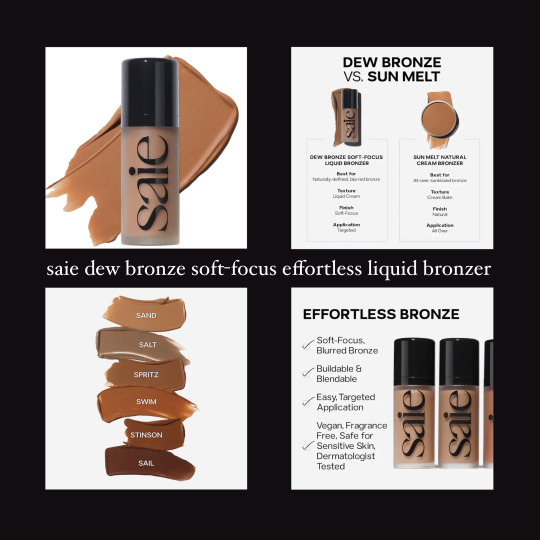
⭐️ new from saie !!
$25.00 USD
12 ml / .4 oz
6 shades at launch
Sephora tags: clean + planet aware, liquid formula, natural finish, vegan, fragrance free, without silicones.
“A lightweight, buildable liquid-cream bronzer that blends seamlessly into skin for a subtly defined bronze with a dewy, soft-focus finish.”
🌙✨ ingredient list (at launch) -
Isocetyl Stearoyl Stearate, Glycerin, Tribehenin, Glyceryl Stearate, Silica, Aqua/Water/Eau, Sambucus Nigra, Fruit Extract, Glycyrrhiza Glabra (Licorice) Root Extract, Morus Alba Leaf Extract, Symphytum Officinale Leaf Extract, Oenothera Biennis (Evening Primrose) Root Extract, Mica, Tin Oxide, Titanium Dioxide (CI 77891), Iron Oxides (CI 77491, CI 77492, CI 77499).
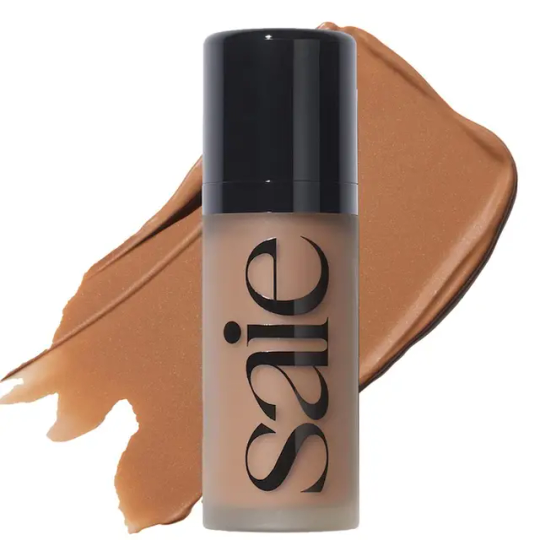
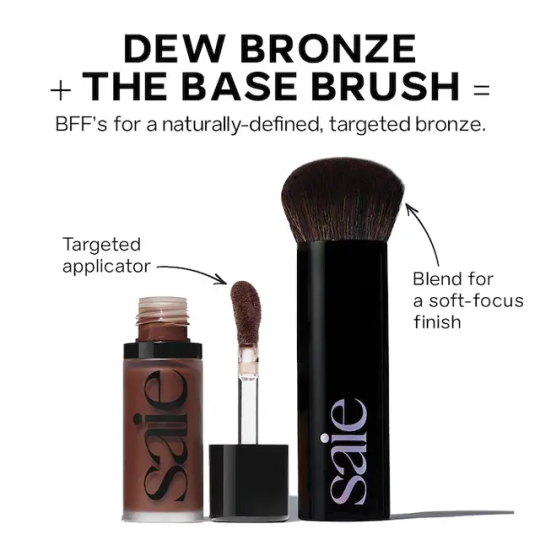
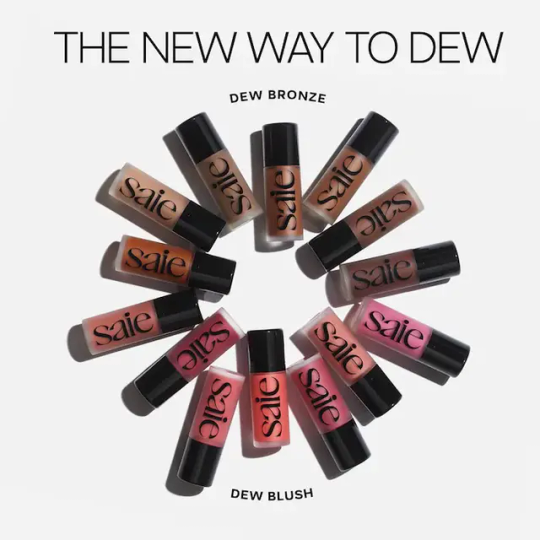
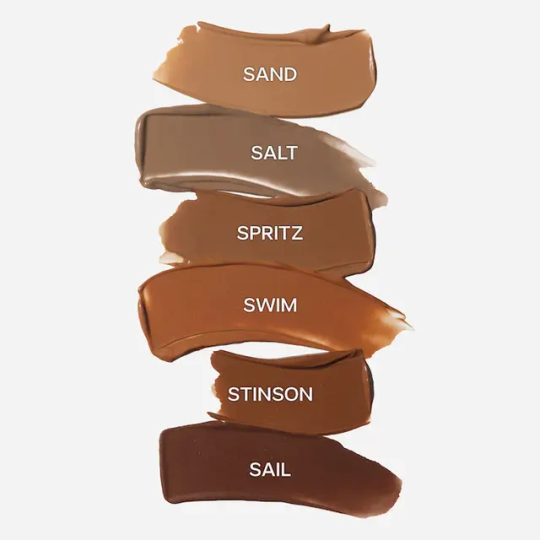
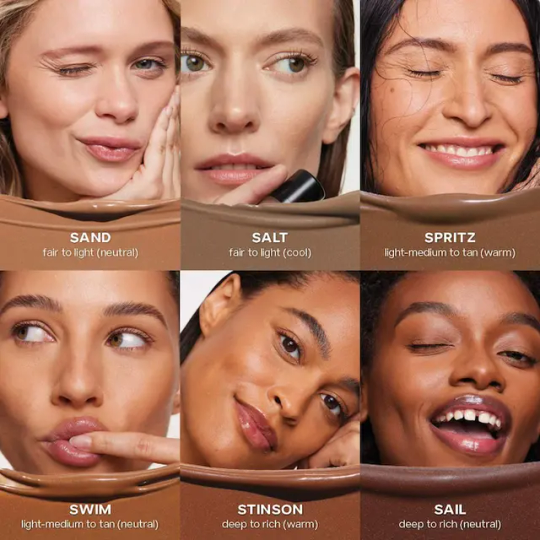
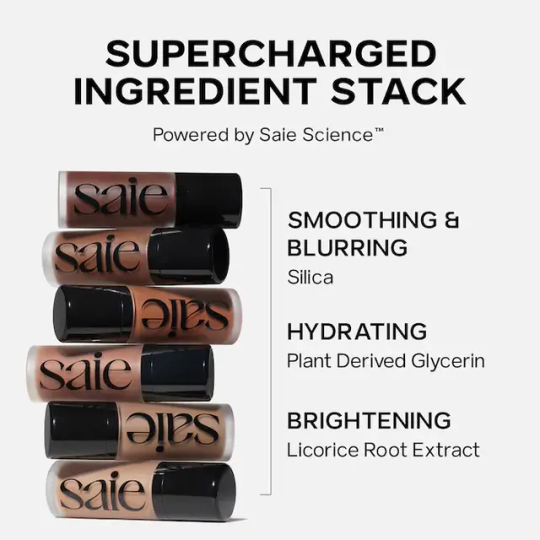
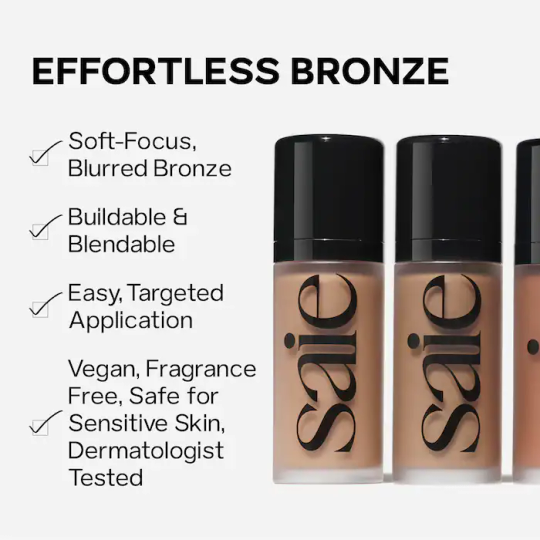
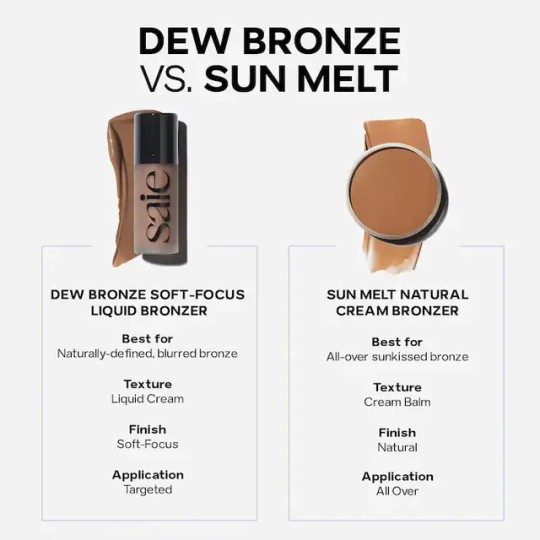
#New makeup#makeup#makeup news#Coquette#dark coquette#Girlblogger#girlblog#this is a girlblog#Beauty#cosmetics#bronzer#Liquid bronzer#🤍 lifestyle tag#📁 filed under makeup#Saie
3 notes
·
View notes
Text
Weather Modification Patents
(Conspiracy Theory, except it’s not)
YEAR - PATENT NUMBER - PATENT NAME
1891 – US462795A – method of producing rain-fall
1914 – US1103490A – rain maker (balloon images)
1917 – US1225521A – protection from poisonous gas in warfare
1920 – US1338343A – process and apparatus for the production of intense artificial clouds, fogs, or mists
1924 – US1512783A – composition for dispelling fogs
1927 – US1619183A – process of producing smoke clouds from moving aircraft
1928 – US1665267A – process of producting artificial fogs
1932 – US1892132A – atomizing attachment for airplane engine exhausts
1933 – US1928963A – electrical system and method (for spraying chemtrails)
1934 – US1957075A – airplane spray equipment
1936 – US2045865A – skywriting apparatus
1936 – US2052626A – method of dispelling fog (mit)
1937 – US2068987A – process of dissipating fog
1939 – US2160900A – method for vapor clearing
1941 – US2232728A – method and composition for dispelling vapors
1941 – US2257360A – desensitized pentaerythritol tetranitrate explosive
1946 – US2395827A – airplane spray unit (us. dept. of agriculture)
1946 – US2409201A – smoke-producing mixture
1949 – US2476171A – smoke screen generator
1949 – US2480967A – aerial discharge device
1950 – US2527230A – method of crystal formation and precipitation
1951 – US2550324A – process for controlling weather
1951 – US2570867A – method of crystal formation and precipitation (general electric)
1952 – US2582678A – material disseminating apparatus for airplanes
1952 – US2591988A – production of tio2 pigments (dupont)
1952 – US2614083A – metal chloride screening smoke mixture
1953 – US2633455A – smoke generator
1954 – US2688069A – steam generator
1955 – US2721495A – method and apparatus for detecting minute crystal forming particles suspended in a gaseous atmosphere (general electric)
1956 – US2730402A – controllable dispersal device
1957 – US2801322A – decomposition chamber for monopropellant fuel
1958 – US2835530A – process for the condensation of atmospheric humidity and dissolution of fog
1959 – US2881335A – generation of electrical fields (haarp – for re-charging clouds!)
1959 – US2903188A – control of tropical cyclone formation
1959 – US2908442A – method for dispersing natural atmospheric fogs and clouds
1960 – US2962450A – fog dispelling composition (see references)
1960 – US2963975A – cloud seeding carbon dioxide bullet
1961 – US2986360A – aerial insecticide dusting device
1962 – US3044911A – propellant system
1962 – US3056556A – method of artificially influencing the weather
1964 – US3120459A – composite incendiary powder containing metal coated oxidizing salts
1964 – US3126155A – silver iodide cloud seeding generator (main commercial ingredient)
1964 – US3127107A – generation of ice-nucleating crystals
1964 – US3131131A – electrostatic mixing in microbial conversions
1965 – US3174150A – self-focusing antenna system (haarp)
1966 – US3257801A – pyrotechnic composition comprising solid oxidizer, boron and aluminum additive and binder
1966 – US3234357A – electrically heated smoke producing device
1966 – US3274035A – metallic composition for production of hydroscopic smoke
1967 – US3300721A – means for communication through a layer of ionized gases (haarp)
1967 – US3313487A – cloud seeding apparatus
1967 – US3338476A – heating device for use with aerosol containers
1968 – US3410489A – automatically adjustable airfoil spray system with pump
1969 – US3429507A – rainmaker
1969 – US3430533A – aircraft dispensor pod having self-sealing ejection tubes
1969 – US3432208A – fluidized particle dispenser (us air force)
1969 – US3437502A – titanium dioxide pigment coated with silica and aluminum (dupont)
1969 – US3441214A – method and apparatus for seeding clouds
2001 -US20030085296A1 - Hurricane and tornado control device
#pay attention#educate yourself#educate yourselves#reeducate yourself#knowledge is power#reeducate yourselves#think for yourself#think for yourselves#think about it#do your homework#do your research#do your own research#question everything#ask yourself questions#ask yourselves#look things up
31 notes
·
View notes
Text
Practical Tips for Applying Sunscreen Effectively on Dark Skin
While it is a common misconception that individuals with darker skin tones are not as susceptible to sun damage, the truth is that everyone, regardless of their skin color, needs proper sun protection. Dark skin contains more melanin, which offers some natural protection against the harmful effects of UV rays. However, this does not eliminate the need for sunscreen. In fact, applying sunscreen on dark skin is just as important to prevent sunburn, skin damage, premature aging, and even skin cancer. In this article, we will explore practical tips and techniques specifically tailored to effectively apply sunscreen on dark skin, ensuring optimal sun protection and maintaining skin health.

1. Understanding the Unique Needs of Dark Skin for Sun Protection
1.1 The Science Behind Dark Skin and Sun Exposure
When it comes to sun protection, it's essential to understand the unique needs of dark skin. People with darker skin tones have higher amounts of melanin, which provides some natural sun protection. However, this doesn't mean they're immune to the harmful effects of the sun. Dark skin can still experience sunburn, sun damage, and an increased risk of skin cancer, although it may be less visible compared to lighter skin tones.
1.2 Common Misconceptions about Sun Protection for Dark Skin
There's a common misconception that dark skin doesn't need sunscreen. But let's clear this up: EVERYONE, regardless of skin color, needs sun protection. Another misconception is that dark skin is not prone to sunburn. While it may take longer to burn, prolonged sun exposure without protection can still lead to sunburn and other skin problems. So, let's put these misconceptions to rest and prioritize sun protection for dark skin!
2. Choosing the Right Sunscreen for Dark Skin
2.1 Understanding Sunscreen Ingredients and SPF
When choosing sunscreen for dark skin, it's important to look for broad-spectrum protection, which shields against both UVA and UVB rays. Opt for a sunscreen with a minimum SPF of 30, but don't think that higher numbers mean better protection. SPF 30 blocks about 97% of UVB rays, while SPF 50 blocks around 98%. So, no need to break the bank for sky-high SPF numbers!
2.2 Sunscreen Formulations Suitable for Dark Skin
Finding the right sunscreen formulation can make a difference in the application and appearance on dark skin. Look for sunscreens that are lightweight, non-greasy, and don't leave a white cast. Mineral sunscreens with ingredients like zinc oxide or titanium dioxide can be a great option for dark skin. They offer effective sun protection and blend well without leaving a ghostly residue.
3. Preparing Your Skin Before Applying Sunscreen
3.1 Cleansing and Exfoliating the Skin
Before applying sunscreen, make sure your skin is clean and free from excess oils and dirt. Use a gentle cleanser to remove any impurities, and consider exfoliating regularly to promote even application. Exfoliation helps get rid of dead skin cells, allowing the sunscreen to penetrate the skin more effectively.
3.2 Moisturizing for Optimal Sunscreen Application
Moisturizing is a crucial step before applying sunscreen. It helps create a smooth canvas for the sunscreen and makes the application process easier. Look for a lightweight moisturizer that suits your skin type and absorbs quickly. Hydrated skin not only ensures better sunscreen adherence but also helps maintain overall skin health.
4. Applying Sunscreen on Dark Skin: Key Techniques and Tips
4.1 Proper Amount and Distribution of Sunscreen
Applying sunscreen is not a time to be stingy. A dollop won't do the trick! Use at least a teaspoon (about a quarter-sized amount) for your face and an ounce (roughly a shot glass full) for your body. Don't forget less visible areas like ears, back of the neck, hands, and feet. Be generous with your application, ensuring all exposed skin gets proper coverage.
4.2 Massage and Blending Techniques for Even Coverage
Applying sunscreen is not just about slapping it on; it's an art! Massage the sunscreen into your skin using gentle, circular motions. Pay extra attention to areas that are prone to sunburn or often neglected, such as the hairline, temples, and around the eyes. Take a few extra seconds to blend it in thoroughly for a seamless finish and even coverage. Remember, applying sunscreen should be a part of your daily routine, regardless of the weather or season. So, protect your beautiful dark skin and embrace the sun safely!
5. Sunscreen Application for Different Parts of the Body
5.1 Face and Neck
When applying sunscreen to your face and neck, it's important to be thorough but gentle. Start by cleansing and moisturizing your face, then apply a generous amount of sunscreen. Don't forget to cover your neck as well, as it's often exposed to the sun. Gently massage the sunscreen into your skin, making sure to blend it well, especially around the hairline and jawline. If you're using makeup, apply sunscreen first and give it a few minutes to absorb before proceeding with your makeup routine.
5.2 Arms and Legs
For your arms and legs, begin by applying sunscreen to your hands and rubbing them together. This will help distribute the product evenly. Then, apply sunscreen to the top and bottom of your arms and legs, paying attention to the elbows and knees. Use long, sweeping motions to ensure thorough coverage. If you're wearing sleeves or long pants, make sure to apply sunscreen to any exposed areas.
5.3 Hands and Feet
When it comes to your hands and feet, it's easy to overlook them, but they also need protection from the sun. Apply a liberal amount of sunscreen to the back of your hands, palms, and in between your fingers. Don't forget to extend the application to your wrists as well. For your feet, focus on the tops and soles, and don't forget the areas between your toes. If you're wearing sandals or open-toed shoes, make sure to apply sunscreen to your exposed feet.
6. Reapplying Sunscreen Throughout the Day
6.1 Frequency of Sunscreen Reapplication
To maintain adequate protection, it's crucial to reapply sunscreen every two hours, especially if you're spending extended periods outdoors or engaging in activities that cause sweating or swimming. Regardless of your skin tone, the sun's rays can still penetrate through and cause damage. Set a reminder or use a sunscreen app to help you keep track of the time and make reapplication a habit.
6.2 Tips for Reapplying Sunscreen without Disturbing Makeup
Reapplying sunscreen doesn't have to mean sacrificing your flawless makeup. Look for sunscreen mist or spray formulations that allow for easy application without disturbing your makeup. Simply hold the bottle about six inches away from your face and lightly mist over your makeup. Alternatively, you can use a brush-on sunscreen powder for touch-ups throughout the day. It's a convenient way to stay protected without messing up your makeup masterpiece.
7. Additional Sun Protection Measures for Dark Skin
7.1 Protective Clothing and Accessories
While sunscreen is essential, it's not the only line of defense against the sun's harmful rays. Darker-skinned individuals can benefit from wearing protective clothing and accessories that shield the skin from direct sun exposure. Opt for lightweight, long-sleeved shirts, pants, and wide-brimmed hats. Don't forget to protect your eyes with sunglasses that provide 100% UV protection.
7.2 Seeking Shade and Timing Outdoor Activities
Another smart strategy is to seek shade during peak sun hours, usually between 10 a.m. and 4 p.m. If possible, schedule outdoor activities for early morning or late afternoon when the sun's rays are less intense. This will help minimize direct exposure to the sun and reduce the risk of sunburn or skin damage.
8. Common Mistakes to Avoid When Applying Sunscreen on Dark Skin
When it comes to applying sunscreen on dark skin, some mistakes are more common than others. Avoid these pitfalls to ensure proper sun protection: - Not applying enough sunscreen: Dark skin can give a false sense of security, but it still needs adequate protection. Don't skimp on the amount of sunscreen you use. - Neglecting to reapply: Regardless of skin tone, sunscreen effectiveness diminishes over time. Reapply every two hours or as directed on the product label. - Ignoring commonly missed areas: Pay attention to often overlooked areas, such as the ears, lips, hairline, and the back of the neck. - Using expired sunscreen: Check the expiration date on your sunscreen, as expired products may lose their effectiveness. - Relying solely on sunscreen: Remember that sunscreen is just one part of a comprehensive sun protection strategy. Use it in conjunction with other protective measures, such as seeking shade and wearing protective clothing. By following these practical tips and avoiding common mistakes, you can protect your dark skin from the sun's harmful rays and enjoy the outdoors with confidence. Stay sun-safe and rock that radiant skin!
By following these practical tips and techniques for applying sunscreen effectively on dark skin, you can ensure that your skin is adequately protected from the damaging effects of the sun. Remember, sun protection is not a one-time task but an ongoing practice. By incorporating these strategies into your daily routine and being consistent with sunscreen application, you can enjoy the outdoors while keeping your skin healthy and radiant for years to come.

FAQ
1. Is sunscreen necessary for dark skin?
Yes, sunscreen is necessary for dark skin. While dark skin does offer some natural protection against the sun due to higher melanin levels, it is still susceptible to sun damage, skin cancer, and premature aging. Applying sunscreen helps to enhance the skin's defense against harmful UV rays and maintain overall skin health.
2. How do I choose the right sunscreen for dark skin?
When choosing sunscreen for dark skin, opt for broad-spectrum sunscreens with an SPF of 30 or higher. Look for sunscreens that are specifically formulated for diverse skin tones or those that are transparent and do not leave a white cast on the skin. Additionally, consider lightweight and non-greasy formulas that are easily absorbed to avoid any residue or discomfort.
3. How often should I reapply sunscreen on dark skin?
It is recommended to reapply sunscreen every two hours, or more frequently if you are sweating heavily or engaging in water activities. Even if you are using a water-resistant sunscreen, it is crucial to reapply after toweling off or excessive perspiration to ensure continuous protection.
4. Can I rely on sunscreen alone for sun protection on dark skin?
No, sunscreen should not be the sole method of sun protection. While sunscreen is an essential part of sun protection, it is important to complement it with other measures. Seek shade during peak sun hours, wear protective clothing, such as hats and sunglasses, and consider using umbrellas or sun shelters. This multi-faceted approach will help provide comprehensive protection for your skin.
#sunscreen #skincare #sunblock #spf #serum #cleanser #beevenom
5 notes
·
View notes
Text
The Benefits and Applications of Food Grade Titanium Dioxide
Titanium dioxide (TiO₂), a white pigment known for its exceptional brightness and opacity, is a versatile compound used extensively in various industries. In the food sector, its primary role is as a food colorant, known as E171 in Europe. This article explores the benefits and diverse applications of food-grade titanium dioxide.
Benefits of Titanium Dioxide
Brightness and Whiteness: Titanium dioxide provides unparalleled brightness and whiteness to food products. This quality is especially valuable in enhancing the visual appeal of white foods like dairy products, candies, and baked goods.
Stability: It offers excellent stability under heat, light, and UV exposure, making it an ideal additive for foods that undergo various processing stages.
Safety: Decades of use have shown no verifiable link between titanium dioxide consumption and adverse health effects. It is deemed safe by multiple regulatory bodies, including the European Food Safety Authority (EFSA).
Efficiency: Titanium dioxide is highly efficient, requiring lower quantities to achieve the desired coloration compared to alternative colorants. This efficiency translates into cost savings for manufacturers.
Applications in Food Industry
Confectionery and Bakery: Titanium dioxide is widely used to brighten candies, frosting, and powdered sugar on donuts. Its ability to maintain color under varying conditions ensures the products remain visually appealing throughout their shelf life.
Dairy Products: In dairy products like cheese and yogurt, titanium dioxide enhances the whiteness, making these products more attractive to consumers.
Non-Dairy Creamers: It provides the creamy, white appearance that consumers expect in non-dairy creamers, ensuring product consistency.
Pharmaceuticals: Beyond food, titanium dioxide plays a critical role in the pharmaceutical industry, particularly in tablet coatings, providing color coding for easy identification and protection from UV degradation.
Titanium dioxide's unique properties make it an indispensable additive in the food industry. Its brightness, stability, and safety have been validated over decades of use, making it a reliable choice for enhancing the visual appeal of various food products.
For more information visit us:
0 notes
Text
9 People You Want to Get to Know Better
Tagged by the lovely @nature-nerd-sarah 💜
Favorite Color: purple! Bonus points if its that cool titanium dioxide rainbow purple!!!
Currently Reading: Dead Silence which is so far WAY better than the silly name implies (crew on the edge of human-colonized space discovers a ghost ship missing 20 yrs, fucked up shit ensues) and Annihilation, which I’m finally getting to a million years after everyone else has read it 😆
Last Series: Abbot Elementary! If you work with kids or have any in your life or also if you just want a deeply heartfelt comedy, i would absolutely recommend it!
Sweet, Savory, or Spicy?: last week i bought a bag of butterscotch chips, like the kind you put in cookies, and my intention was to nibble them like a tasty treat here and there. I ate the whole bag in a day. In like, an hour, actually. Anyway. Sweet.
Currently Working On: working with the landscaping crew at the museum I work for to see if we can redo it completely to center on native plants, and maximizing our space to cram as many of those plants in every available nook and cranny!
Tagging: @thecountvoncurdles @onegoodscare @cactusramune @devil-dyke
@kelpforestdwellers @ohbabynotmygayass
@wizardbones @saxophonechihuahua
@dykefungus
6 notes
·
View notes
Note
Hmmm well if I remember correctly many gems are oxidized metals right, anatase being titanium dioxide?, well, wasn't there a way to seperate the dioxide from the titanium?, I want to know if it's possible to make an anatase holding necklace made purely out of anatase sourced titanium
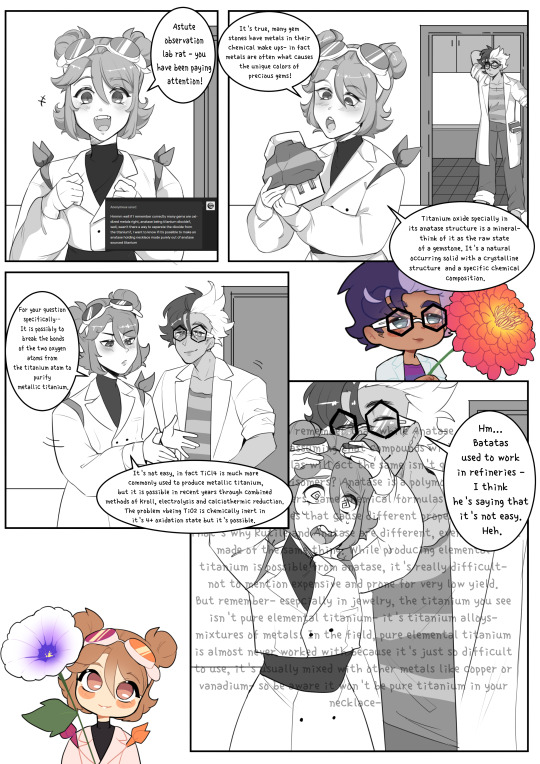
Batatas: Astute observation, lab rat- you really have been paying attention!
Batatas: It's true, many gemstones have metals in their chemical make ups- in fact, metals are often what cause the unique colors of precious gems!
Batatas: Titanium oxide especially in its anatase structure is a mineral- think of it as the raw state of a gemstone. It's a naturally occurring solid with a crystalline structure and a clear chemical composition.
Batatas: For your question specifically… It is possible to break the bonds of the two oxygen atoms from the titanium atom to purify metallic titanium. It's not easy, in fact, TiCl4 is much more commonly used to produce metallic titanium, but it is possible in recent years through combined methods of Kroll, electrolysis, and calciothermic reduction. These all have their own issues, TiO2 is chemically inert in its 4+ oxidation state but it's possible.
Batatas: It's important to remember that while Anatase is made of titanium oxide, assuming that compounds with the same chemical formulas will act the same isn't quite true- Remember about isomers? Anatase is a polymorph crystal equivalents of isomers, same chemical formulas but differing 3D structures that cause different properties! That's why Rutile and Anatase are different, even if they're made of the same thing.
Batatas: While producing elemental titanium is possible from anatase, it's really difficult. Not to mention expensive and prone to very low yield. But remember- especially in jewelry, the titanium you see isn't pure elemental titanium- it's titanium alloys, mixtures of metals! In the field, pure elemental titanium is almost never worked with because it's just so difficult to use, it's usually mixed with other metals like copper or vanadium- so be aware it won't be pure titanium in your necklace-
Jacq: Hm... Batatas used to work in refineries before he became a teacher- I think he's saying that it's not easy. Heh.
(I did so much research for this ask)
#pokemon askblog#pokemon#pokemon oc askblog#pokemon oc#pokemon scarlet and violet#pokemon sv#pokemon scarlet and violet oc#pokemon sv oc#askblog#oc askblog
10 notes
·
View notes
Text
A brief history of colors and some popular pigments
Black pigment
Black pigment has a long history, starting with charcoal paintings in Stone Age caves. Through centuries of research, people have known how to change the burning conditions and choose the type of wood to customize the shade of this black. Coal can be pressed into a dry bar, or it can be ground into a powder and mixed with water or other liquids to produce the black dye that is now known as carbon black, with the pigment code PBk 7.
During the renaissance, artists often worked with black obtained from the soot of oil lamps, known as lamp black pigment – PBk 6. This pigment has a matte black color with a slightly cool tint. The lamp black is also used in Egyptian tombs and murals, replacing charcoal, which is denser but less pure.
Ivory black or bone black was originally created by boiling the crumbs obtained during the ivory making process to remove fat and gelatine, then ground and concentrated into a harder and coarser form to produce black. The production of ivory pigments was stopped in the 1930s, and today the pigment is mainly made from animal bones, with the color index name PBk 9. This pigment is semi-transparent, has a tinting strength is lower than that of carbon-based black pigments, but has a unique feature of deep yellow or brown undertones.
PBk 11 is an inorganic iron oxide pigment, which is different from all the black pigments mentioned above because there is no carbon in the composition. PBk 11 has a very high color fastness and is almost indestructible. In a mixture of colors, it can easily overwhelm all other colors. PBK 11 is also known as Mars black, named after Mars, the god of war in Greek mythology.
white pigment
The first white substance in history is thought to be natural calcium carbonate chalk, which is an exceptionally soft limestone, formed from the shells and bones of microscopic organisms deposited and compacted over millions of years. The calcium carbonate (CaCO3) that gives the white color can also be obtained from eggshells, oyster shells, ... In European literature, the term "shell white" is often used to refer to these ancient whites. Natural white pigment with calcium carbonate composition is still used to this day, has the pigment code PW 18.
The first synthetic white pigment produced on a commercial scale was lead white (PW 1), which dates back to around 300 BC. Despite its proven toxicity, white lead remained in widespread use until the late 19th century, when the superior zinc white and titanium white appeared and replaced it. There are many documents detailing how to make white lead. In the oldest process, lead rods were exposed to vinegar fumes in sealed clay pots. These pots were buried in manure or tree bark to maintain the temperature for several months so that the lead converted to white lead.
Zinc white (PW 4) with zinc oxide composition (ZnO) is produced by burning zinc in an oxidizing medium or zinc ore in a reducing medium. This pigment has the special property of being able to emit yellow fluorescence under long-wave ultraviolet light. Zinc whites are not toxic, nor are they as clearly affected by hydrogen sulfide as lead whites, but their whiteness is clearly inferior.
In 1908 in New York, a metallurgist named Auguste Rossi invented a brilliant white pigment, titanium dioxide (Titanium White - PW 6). This pigment is extremely stable, it is not affected by heat, dilute acids or alkalis, light or hydrogen sulfide. Most importantly, titanium white reflects about 97% of light, making it the best white ever known. Because of that, it quickly became popular in many fields. Titanium dioxide also provides UV absorption, which greatly improves weather resistance and durability for outdoor applications.
The chemical classification of titanium dioxide, which for many years was considered no problem, is even widely used in the pharmaceutical and cosmetic industries. However, they have become the subject of heated discussion over the past few years, when a European Union authority has changed the way they are classified and evaluated. Titanium dioxide (TiO2) particles with an aerodynamic diameter ≤ 10 μm are considered hazardous when inhaled.
Before titanium white appeared, the dominance in the segment belonged to Lithopone white (PW 5). They once accounted for 60% of the white pigment market, outperforming both lead white and zinc white combined. Lithopone is moderately strong in blends, not as strong as Titanium white, but not as gentle as Zinc white either. For those who are concerned about the durability of zinc white, but don't like the opacity of titanium white, PW 5 can be a good alternative.
Red pigment
Red is a color associated with love, excitement, and danger. This color also symbolizes good luck in many Eastern cultures. There are many red pigments that have been found and present in the pigment database.
The earliest red pigment discovered by mankind was red ocher, which is clay that has been colored by rusted (oxidized) iron. The red iron oxide pigment consists of the mineral hematite with some minor minerals such as clay, chalk and quartz. Red ocher differs from yellow ocher and brown ocher in that they do not contain H2O in their chemical structure. Today, synthetic iron oxide red pigments have the pigment code PR 101. They are chemically very similar to natural red iron oxide (PR 102), but transparent and more vibrant in color.
Lead red (minium) is an ancient pigment that is considered to be one of the first synthetic man-made pigments. Red lead is made by heating white lead to oxidize it at high temperatures. They are still used to this day, in anti-rust paints for steel structures, especially used a lot on ships.
The famous Chinese red color dating back to the fourth century BC is “Chusha” (Cinnabar), which is used to make paints, lacquers, ceramic glazes and calligraphy ink. Many people mistakenly believe that cinnabar is a plant because it is also a medicine in traditional medicine, but in fact, cinnabar is a mineral with the main component mercury sulfide (HgS). Artificial cinnabar, used by the Romans since the Middle Ages. This pigment is named Vermillion, has a color index name PR 106. Vermillion is much more vibrant than natural cinnabar, but both are quite toxic.
Besides the red pigments obtained from minerals, history also records some organic red pigments obtained from plants such as kermes tree, brazilwood or some palm species in Asia. The Incas also had their own red pigment for dyeing their robes, obtained from the Cochineal - a beetle that feeds on cactus.
The age-old reds made from lead and mercury, though toxic, have been commonly used throughout human history. The real alternatives have only appeared for more than a century, with the development of modern chemistry.
Red Cadmium (PR 108) is a dual product of zinc ore. PR 108 can include many different shades of red, for example Cadmium Red Light leans more towards orange, while Cadmium Red Deep is slightly maroon.
Naphthol red pigments PR 5, PR 9, PR 112, PR 170 and PR 188 are a large group of synthetic organic red pigments. While PR 5 can serve as the primary, medium-tone red in the palette, PR 9 is more of an orange hue. PR112 has a soft bright orange color, PR 170 includes Naphthol Red Light with an orange-red color and Naphthol Red Deep leaning towards purple.
Alizarin Crimson (PR 83) has a deep, cold red color and has high tinting intensity. Mixing PR 83 with Viridian Blue (PG 18) or Phthalo Blue (PG 7) creates a very deep black. PR 122 – Quinacridone Magenta is a vibrant red with a blue tint that makes them almost purple. The same Quinacridone family also has a red color PR 202 which is a bit greener than PR 122, PR 206 - Quinacridone Maroon has a red color that turns brown, while PR 207 - Quinacridone Scarlet is bright coral red.
Yellow pigment
Of all the pigment groups, yellow is the largest and most diverse because there are many substances in nature that can produce this color.
The oldest yellow pigment in prehistoric cave paintings, is yellow ocher, also crumbly clay colored by iron oxides. They are still in use today, with the pigment code PY 43 for natural yellow iron oxide and PY 42 for synthetic yellow ocher. Both natural ocher yellow and synthetics are both great colors in art, as they will produce very natural looking greens when mixed with blue pigments.
In early civilizations in Asia, Egypt and Greece, human used a yellow substance called Orpiment, which was synthesized by subliming a mixture of sulfur and a small amount of arsenic oxide. The Babylonians used Napoli yellow, which was prepared by heating a mixture of oxides of lead and antimony. Napoli yellow currently has a pigment code of PY 41.
Another well-known yellow is Indian yellow, which is said to be made from the bladder gravel of cows eating mango leaves. However, the original Indian yellow color dating from the 15th century no longer exists. Today's Indian yellow is Diarylide yellow (PY 83).
The 19th century saw the introduction of more modern inorganic pigments such as chromium yellow (lead chromate), cadmium gold (PY 35 and PY 37), nickel gold (PY 53 and PY 150), …
Some other yellow pigments include: Hansa yellow group (PY 3) with bright greenish yellow, PY 65 with deep yellow and PY 97 medium yellow, Barium Chromat lemon yellow (PY 31), Strontium chromate (PY32), cobalt yellow (PY 40), arylide yellow (PY73 and PY74), Isoindolinone yellow (PY 110), Diazo yellow (PY 128), Quinophthalone yellow (PY 138), Benzimidazolone yellow (PY 151, PY154 and PY 154). PY175), …
Blue pigment
Blue includes sky blue and navy blue which are very rare colors in nature. Less than a tenth of plants have this color, and in animals it's even rarer. Even if they're blue, it's not because they actually have a blue pigment, but they've actually done light tricks to achieve.
In plants, blue color is achieved by mixing or altering natural pigments, most commonly by altering the acidity on red anthocyanin pigments such as in canaries, bellflowers, and hydrangeas.
Instead of mixing or changing pigment, the blue color in many animals is caused by structures on their bodies that are able to change the wavelength of light. For example, the Morpho butterfly is blue because the scales of its wings are ridged, causing light to bend, making the only wavelength of light it reflects is blue. The only exception in nature is the Obrina Olivewing butterfly, the only animal known to have a real blue pigment.
The raw material of mankind's first green pigment was "lapis lazuli", a precious stone originating from mines in Afghanistan. "Lapis" means "stone" in Latin, "lazuli" comes from the Persian word "lazuward", meaning "blue". The blue created from this stone is called Ultramarine Blue, is a most perfect pigment, with its qualities said to be unique and unsurpassable. The color index name PB 29 is assigned to both natural and synthetic Ultramarine blue pigments, but today's natural Ultramarine Blue is actually exhausted. Lapis lazuli contains sulfur anions held in an ordered lattice. These sulfur anions have charged particles that move from molecule to molecule, traveling along the surface, helping to create a spatial effect and a deep blue color.
The synthetic blue pigment Ultramarine was discovered in 1826 by the French chemist Jean-Baptiste Guimet. He made a pigment chemically identical to lapis lazuli, by heating kaolinite, sodium carbonate, and sulfur. Synthetic ultramarine usually has a warm red-blue color, which is even more vivid than natural ultramarine blue but is not as pure and has the same depth.
Lapis lazuli is very precious and expensive. Faced with the need for an available and affordable blue pigment, the Egyptians invented the world's first synthetic pigment: Egyptian blue. Calcium copper silicate is calcined at extremely high temperatures, producing a blue-green compound resembling glass. When ground into a powder and mixed with a binder, they create a pigment that persists over time.
Across the ocean, the ancient Maya also found their own color of blue: Maya blue. Scientists are all confused about the origin of this brilliant blue color. It was not until the 1960s that scientists were able to determine the origin of this pigment. It is made by mixing a rare clay (attapulgite or palygorskite) with a dye from a plant in the indigo family.
In 1704 in Berlin, the first modern pigment was accidentally discovered by a dye maker named Diesbach: Prussian Blue (PB 27), also known as Berlin blue. Pigments made from iron ferrocyanide quickly became popular, simply because they were much cheaper than the earlier blues.
Phthalocyanine dark blue was first sold commercially in 1935 under the trade name Monastral Blue or Phthalocynanine Blue. This is a transparent, highly pigmented and reliable blue pigment. PB 15 is divided into 2 types: PB 15:1 – Phthalocyanine Blue Red Shade is more red and warmer, while PB 15:3 – Phthalocyanine Green Shade has a shade closer to green.
Mangan blue (PB 33) is produced by heating a mixture of sodium sulfate, potassium permanganate and barium nitrate at high temperature. This pigment is inert, unaffected by light, heat, acids or alkalis. Manganese blue pigment has now been discontinued due to concerns about the environmental impact of the manufacturing process.
The most common blue color is cobalt blue (cobalt aluminum oxide), which includes a range of pigments such as PB 28 which has a slightly greenish blue tint, PB 29 which is a bit darker, PB 35 which is sky blue, PB 36 is blue with a green tint, while PB 74 contains a little bit of red. Various cobalt minerals have been used since ancient times to color glass and ceramics, but the first synthetic cobalt blue pigment was discovered in 1802 by Louis Jacques Thénard. He discovered that the combination of cobalt oxide and aluminum oxide produced a highly stable blue pigment. Of all the blue pigments, cobalt blue is the only one with opacity.
It was not until 2009, more than two centuries after the last blue was discovered (cobalt blue), that humans found a new blue pigment, and also the last blue pigment up to the present time. It was YinMn Blue (PB 86), which was discovered by chance by a graduate student at Oregon State University. This pigment gets its name from the elements within it including Yttrium (Y), Indium (In) and Manganese (Mn).
3 notes
·
View notes
Text
Can sunscreen be safely used during pregnancy?
As any expectant mother knows, taking care of yourself during pregnancy is a top priority. From monitoring your diet to getting regular exercise, there are many things you can do to promote a healthy pregnancy. One question that often arises, however, is whether it is safe to use sunscreen during pregnancy. In this blog, we will explore this topic in detail and answer the question: can the use of sunscreen be considered safe during pregnancy?
The short answer is that using sunscreen while pregnant is safe. In fact, medical experts strongly advise against it. Pregnant Women should use sunscreen with an SPF of at least 30 and protective gear to shield themselves from the sun's harmful rays. This is due to the fact that being pregnant might make your skin more sensitive to the sun's ultraviolet (UV) rays, which can cause skin damage, early ageing, and even skin cancer.

Yet, some pregnant women can worry about the safety of sunscreen due to the presence of certain ingredients. For instance, the popular sunscreen ingredient oxybenzone has been proven to mimic oestrogen in the body and may cause hormonal imbalances. Retinyl palmitate, another component, is a form of vitamin A that, when consumed in high concentrations, has been associated to birth abnormalities. So, if you are worried about these components, what should you do?
It is essential to note that the risks associated with these ingredients are generally considered to be low. In fact, many experts believe that the benefits of using sunscreen far outweigh any possible risks. Pregnant women who used sunscreen regularly had a lower risk of developing melasma, a condition characterized by dark patches on the skin.
If you are still concerned about the safety of sunscreen during pregnancy, there are some tips you can take to minimize any potential risks. You can choose a sunscreen that does not contain oxybenzone or retinyl palmitate. Look for sunscreens that use physical blockers such as zinc oxide or titanium dioxide instead. These ingredients work by sitting on top of the skin and reflecting UV rays away from the body, rather than being absorbed into the skin.
Another option is to use a mineral-based sunscreen. These sunscreens are made with natural ingredients such as zinc oxide and are less likely to cause skin irritation or allergic reactions. Some mineral-based sunscreens are also formulated to be water-resistant, which can be a plus if you plan to spend time in the water or sweat a lot.
Lukewarm Sunscreen is a mineral sunscreen that functions by dispersing UV radiation, shielding against both shorter and longer UVA rays. Zinc oxide in Lukewarm Sunscreen is primarily used as a barrier against skin-damaging irritants and UV radiation, it may also have some potential benefits for correcting dark spots or melasma.
When choosing a sunscreen, it is also important to pay attention to the SPF rating. An SPF of at least 30 is advised by the American Academy of Dermatology, as this will block 97% of UVB rays. However, higher SPF ratings do not necessarily offer much more protection, so there is no need to go overboard with a super-high SPF.
In addition to using sunscreen, there are other steps you can take to protect yourself from the sun during pregnancy. You can wear a hat with a wide brim to shade your face and neck, and wear long-sleeved shirts and pants made of lightweight, breathable fabrics. You can also stay indoors during the hottest time of the day (usually between 10 a.m. and 4 p.m.).
By choosing a sunscreen with physical blockers or mineral-based ingredients, using an SPF of at least 30, and taking other steps to protect yourself from the sun, you can safely enjoy time. The use of Lukewarm mineral sunscreen can be considered safe during pregnancy!
#lukewarm#face wash#acne prone skin#hyperpigmentation#acne skincare#skincare tips#skincare routine#uva#uvb#melasma#mineral sunscreen
3 notes
·
View notes